This Romanian style slow roasted caramelized cabbage is the caramelized onion of the cabbage world. It's sweet, spicy, smoky, tangy, and full of complex flavours. Through the magic of slow roasting, plain cabbage is transformed into a decadent comfort food that can be served over creamy polenta, in a bun, with potatoes, or even with buttered noodles.
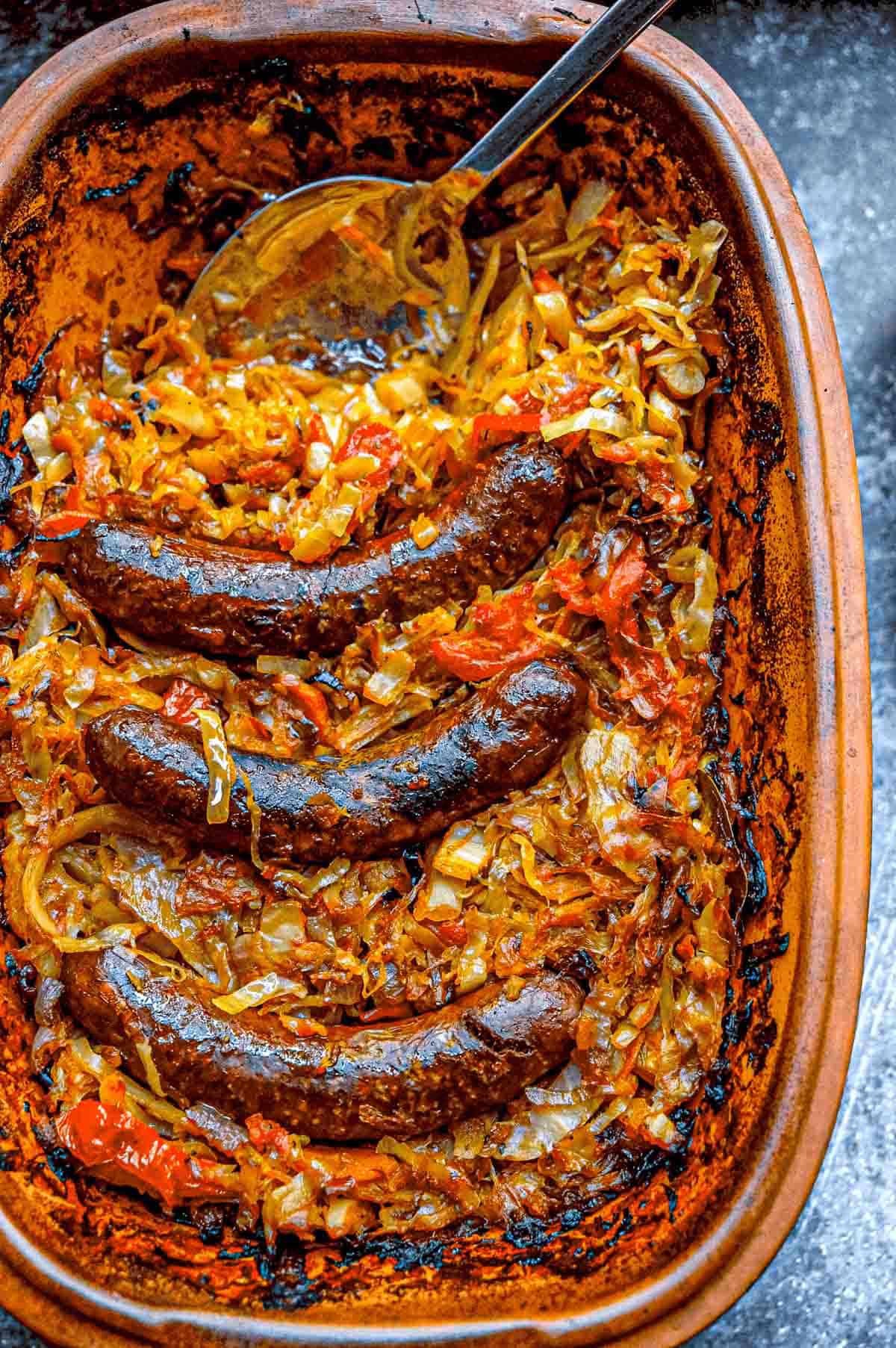
Slow roasted caramelized cabbage is a versatile, unpretentious, low effort but full flavour plant-based dish that you can serve with a protein of your choice - meaty like the sausages shown here or keep it plants!
The version here is not super traditional but it still hits the same flavor notes that a traditional version of this recipe would. If you make this slow roasted caramelized cabbage there's a good chance it'll open your eyes to what cabbage can do.
Long Story Short
Like many good dishes, this one started as humble peasant food so it is wholly unpretentious. As long as you have a head of cabbage, some tomato (fresh, canned or paste), oil and seasonings you can make this recipe work.
I made this with what I had on hand. No supermarket trip required. These are the ingredients I used:
- ½ head of cabbage, sliced into thin strips
- 500 grams of sauerkraut, well drained
- 7 medium sized tomatoes, diced
- 1 carrot, sliced
- 3 onions, finely diced. Yellow is preferable but other types are also okay.
- 8-10 cloves of garlic, sliced
- 1 red hot pepper with seeds, sliced thinly
- 1 handful of fresh thyme for lining the bottom of the baking dish
- ⅓ cup of vegetable oil
- 1.5 tablespoons smoked paprika
- 3 bay leaves
- 1 tablespoon summer savoury (or substitute thyme)
- 2 teaspoons salt
- 1 teaspoon black pepper
Mix it all together, roast in an oven safe dish starting high at 225 C / 440 F for the first 30 minutes and then reduce heat to 160 C / 320 F and continue roasting for another 2.5 to 3 hours.
If you don't have some of these ingredients, check out my section below on ingredients.
Ode to the Humble Cabbage: An unsung culinary hero
Cabbage may not have the range of the potato, but it does have a lot of untapped potential that's woefully underrepresented in the Western culinary world.
Sure you have your slaws and your cabbage steaks - which are undoubtedly delicious - but those methods only capture part of what cabbage can do. There are magical things that happen to cabbage when it's cooked just right - things that people in other parts of the world have known for ages.
Cabbage in Romania, Eastern European and Beyond
In my native Romania we eat a lot of cabbage so I was especially happy to share this recipe (and sing the praises of cabbage) since it's so close to home.
Of course, the most known and loved way to eat cabbage in Romania is in the form of cabbage rolls, or sarmale, which are basically our national dish.
It's not just Romania that loves cabbage rolls though. Cabbage rolls are prepared in a wide range of culinary traditions throughout Eastern Europe, the Balkans, Turkey, the Caucuses, Central Asia, the Middle East and even China.
There's good reason for this worldwide love of cabbage and it isn't just because cabbage makes a good wrapper.
What cabbage can really do
This is the secret potential of cabbage. In a feat of absolute culinary alchemy, when cabbage is slow roasted with the right ingredients the texture is totally transformed. The water evaporates and becomes a luscious pan sauce, and what's left of the hearty cabbage leaves are paper thin almost glassy layers of concentrated flavour with crispy wisps on the edges, tender stems, and the soothing mouthfeel of buttery noodles.
Besides cabbage rolls, in Romanian and other culinary traditions it's also very common to thinly slice and slow roast either fresh or fermented cabbage - which is what brings us to this recipe.
The Recipe & Method for Slow Roasted Caramelized Cabbage
Ingredients
This recipe is made with both fresh and fermented cabbage combined with fresh diced tomatoes, a carrot, onions, garlic, fresh hot pepper, fresh thyme, smoked paprika, dried summer savoury, bay leaves, black pepper, salt and a generous amount of oil.
The amount of oil might seem excessive to some, but it's a key ingredient to transform the cabbage from crunchy and leafy to tender and crisp.
Substitutions, omissions & additions
Cabbage
The most common type of cabbage for this dish in Romania is plain green cabbage. But you can use any kind of cabbage - even purple cabbage will do.
For this recipe I've combined fresh and fermented cabbage because the combination results in a tangier flavour and more tender leaves. You can substitute ½ head of fresh cabbage for 500 grams of fermented or likewise substitute fermented for fresh.
Tomato
You can easily substitute the fresh tomatoes for a can of diced tomatoes, 2 tablespoons of tomato paste, or even a combination of all.
Other vegetables
Carrots are not a traditional ingredient in this dish in my household but they add a nice sweet element. If you have carrots lying around then they can be added. A more traditional vegetable is sweet red pepper. You could also leave out additional vegetables altogether.
Herbs & spices
The combination of paprika, summer savoury, bay leaves and pepper is quite traditional and complements the cabbage and tomato very well.
Fresh thyme: If you don't have fresh thyme, substitute an additional teaspoon of dried thyme.
Dried summer savoury: Dried summer savoury is used more commonly than thyme in Romania but might be less common in other places. If you have any summer savoury, or cimbru as it's called in Romania, then it's an essential flavour - if not then you can substitute dried thyme or otherwise dried oregano to approximate the flavour of summer savoury.
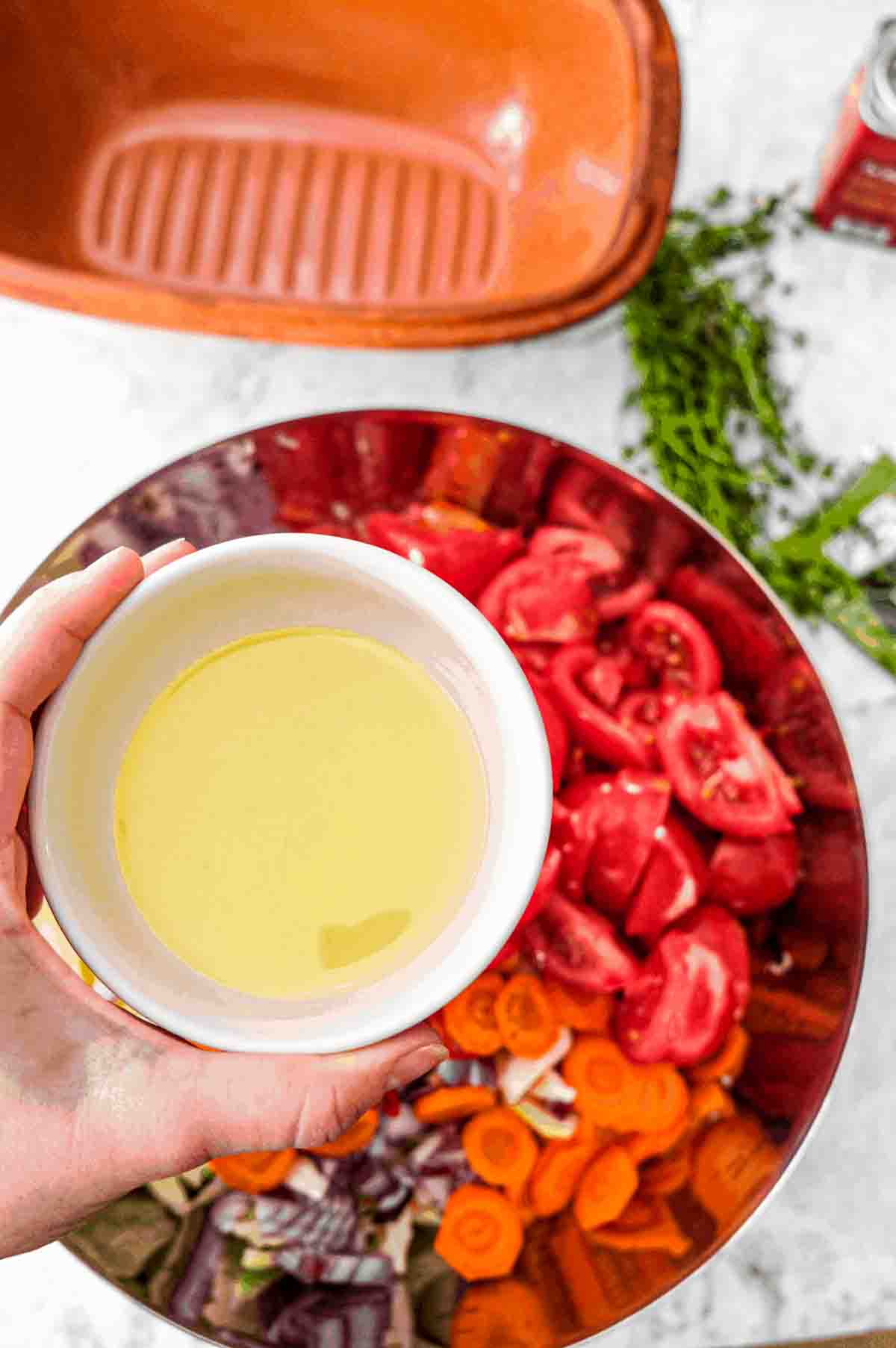
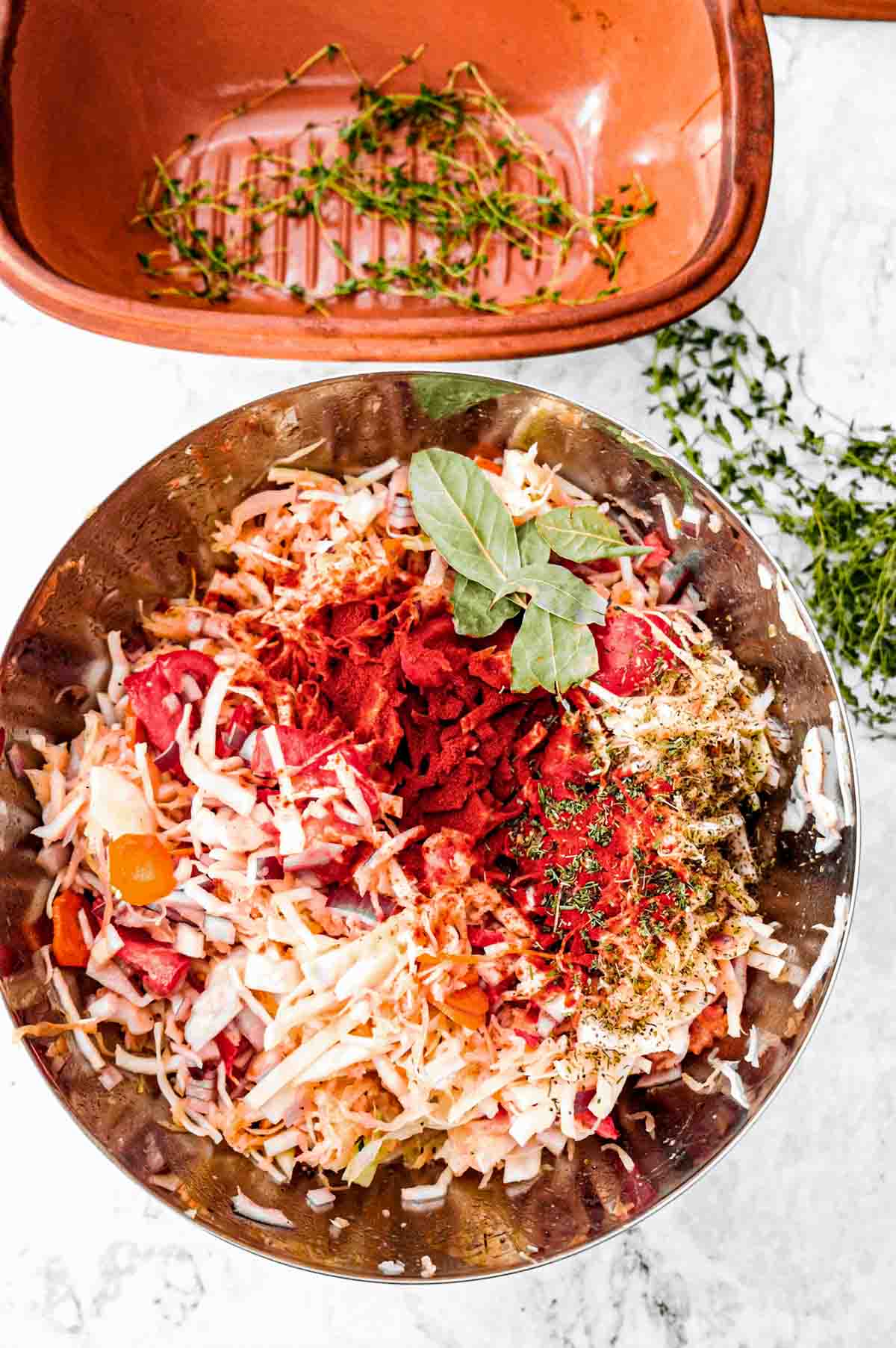
Oil: I used about ⅓ of a cup of plain vegetable oil. Any unflavoured oil will work. I would personally avoid extra virgin olive oil since it would be a waste to cook it for so long. Likewise for any cold pressed unrefined oil. Good options are corn oil, sunflower oil, canola oil, peanut oil, and avocado oil.
As I mentioned before - using a lot of oil is essential for transforming the cabbage texture. Don't be afraid of the oil.
Protein
Vegan/vegetarian option: Since the sausages just sit on top of the dish, you can easily make this vegetarian or vegan by using some veggie sausages instead. Just add them nearer to the end of cooking so they don't overcook. For a whole foods option, add a can or two of white or brown beans to the mix before cooking - beans and cabbage are a traditional combination for good reason.
Adding smoked meat: Smoked meat goes exceptionally well with slow roasted caramelized cabbage. Add a bit of bacon, smoked turkey, or smoked sausages to really enhance the flavours.
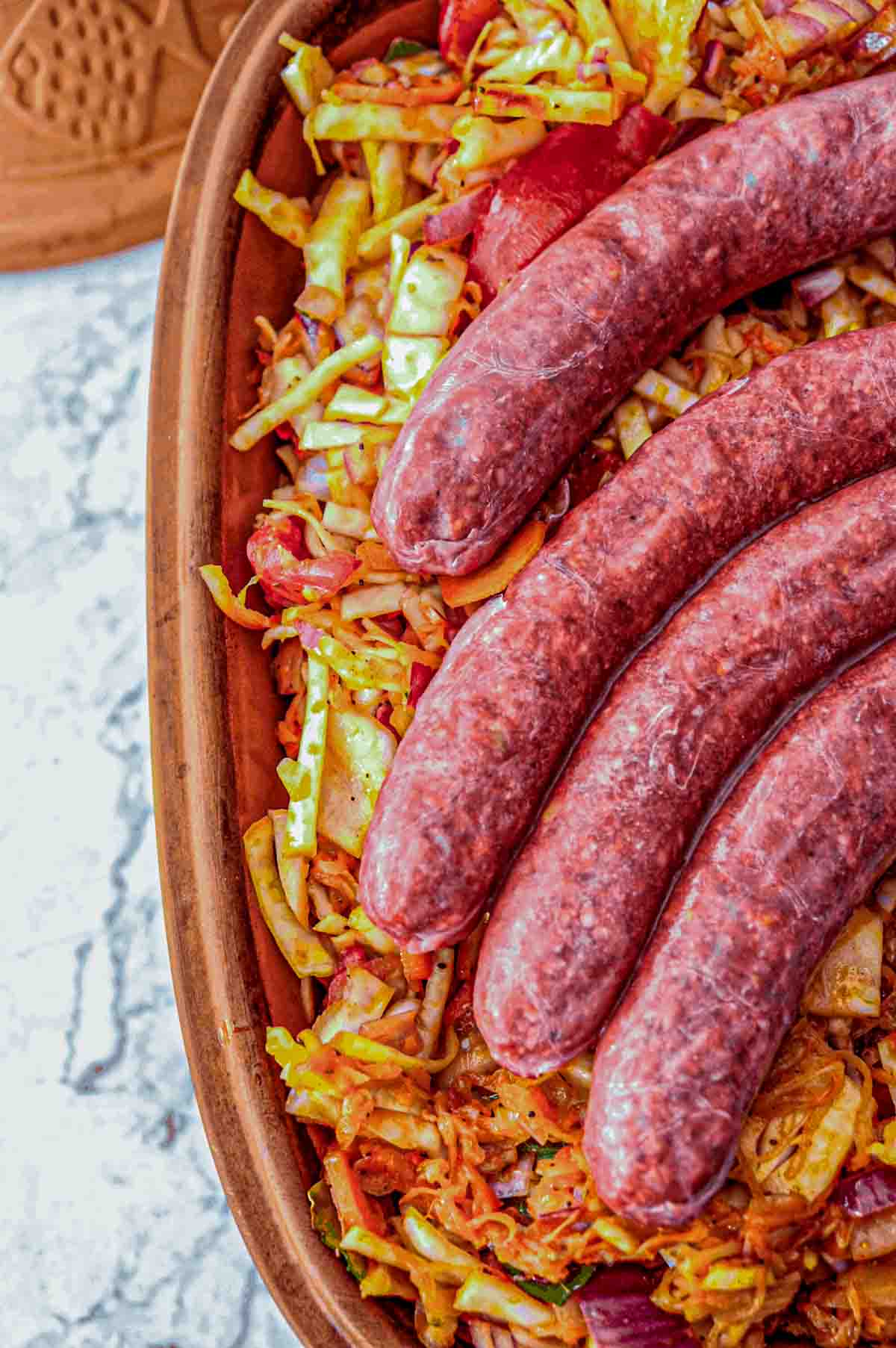
Equipment for Romanian slow roasted cabbage
You don't need any special equipment. If you want you can put the cabbage through a food processor to get extra thin strips you can - this will increase the surface area of the cabbage and hold onto more of the rich pan juices (like using spaghetti instead of fettuccini).
Preparing the ingredients
Preparing the ingredients is simple and low effort. Wash and dice the tomatoes roughly - large pieces are fine since they'll break down anyway. Peel and finely dice the onion, cut the garlic cloves into rough slices. The thyme can go in whole on the bottom of the baking dish.
Shred the fresh cabbage finely. If you're using any fermented cabbage, be sure to squeeze out as much of the juices as you can.
Pro tip: save the fermented cabbage juice - it's a probiotic charged superfood. You can use it in soups, as a marinade, or even just drink it as we often do in Romania - it's our best known hangover remedy.
Once everything is cut, put it all in a bowl, sprinkle with salt, and pour in the oil. Use your hands to massage the cabbage and all the other ingredients. Using your hands to crunch everything together breaks down the vegetable fibers and helps to soften the cabbage. For even lower effort skip this step - the difference is probably fairly minute.
How to cook caramelized cabbage
Type of baking dish
The best baking dishes for caramelizing cabbage are dishes meant for low and slow cooking. A cast iron Dutch oven is a great option, as is an earthenware dish like the romertopf I used.
It's best to use a baking dish with a lid for this type of preparation. The lid seals in the steam, which helps to soften the vegetable fibers and infuse the aromas.
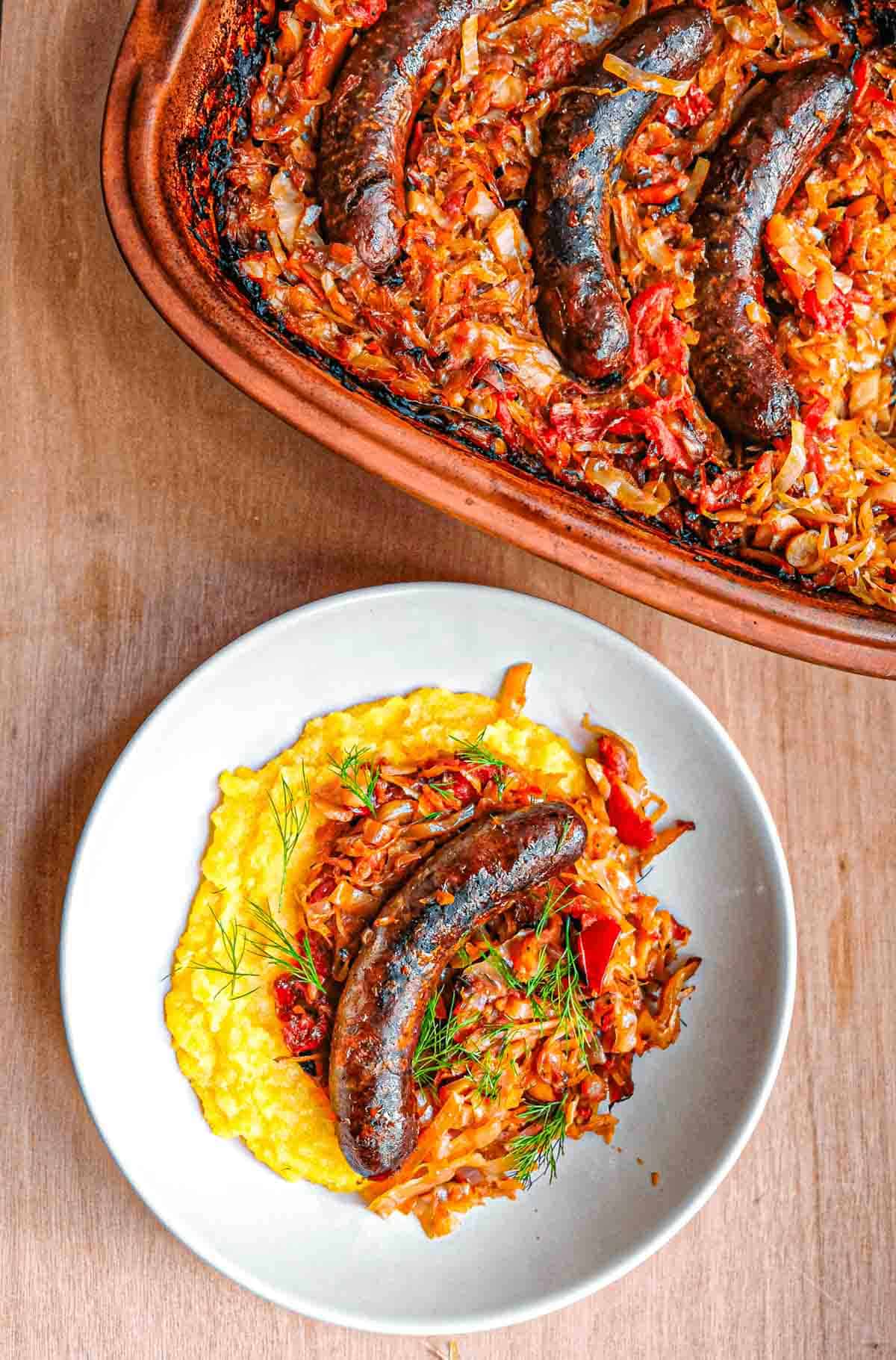
Temperature and time
The cabbage should be treated like a roast - start with very high heat for 30 minutes and then reduce the heat and roast low and slow for 2.5 - 3 additional hours.
In this case I preheated my oven to 225 C / 440 F and roasted for 30 minutes, then reduced the heat to 160 C / 320 F and roasted for an additional 3 hours or so.
Braising vs roasting
While braising involves adding a liquid, roasting is done dry. It's important that the cabbage be roasted and not braised, since adding a liquid will prevent the water from evaporating from the leaves and not result in that beautiful caramelized texture.
Serving suggestions
I've served the cabbage here with sausages over cornmeal porridge aka polenta or mamaliga in Romania. This type of slow roasted cabbage is commonly served with cornmeal porridge in Romania, often with a dollop of sour cream and a few sprigs of fresh dill or parsley.
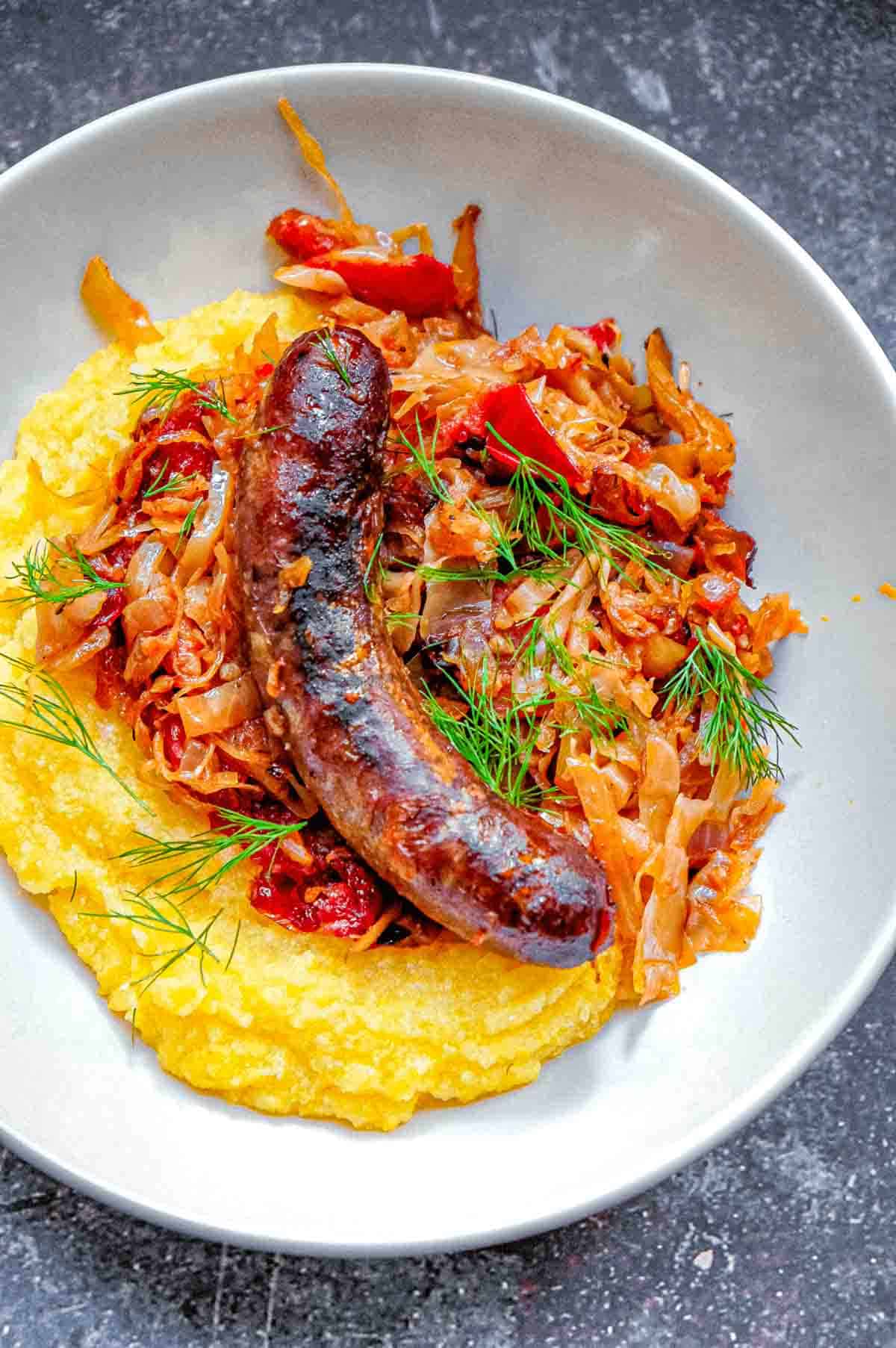
You can also serve it on a bun, with some buttery dill potatoes or crispy roasted potatoes, or even a la haluški, the perfect combination of slow roasted cabbage with noodles which (fun fact) is the national dish of Slovenia.
More Romanian recipes:
Fasole bătută: White Bean Spread with Tomato & Garlic Sauce
Macaroane cu lapte: Sweet Cinnamon & Brown Sugar Pasta
Plăcintă cu telemea: Homemade Phyllo Pie with Sheep Feta
Mancare de Mazare: Green Pea, Tomato & Bacon Stew
Recipe
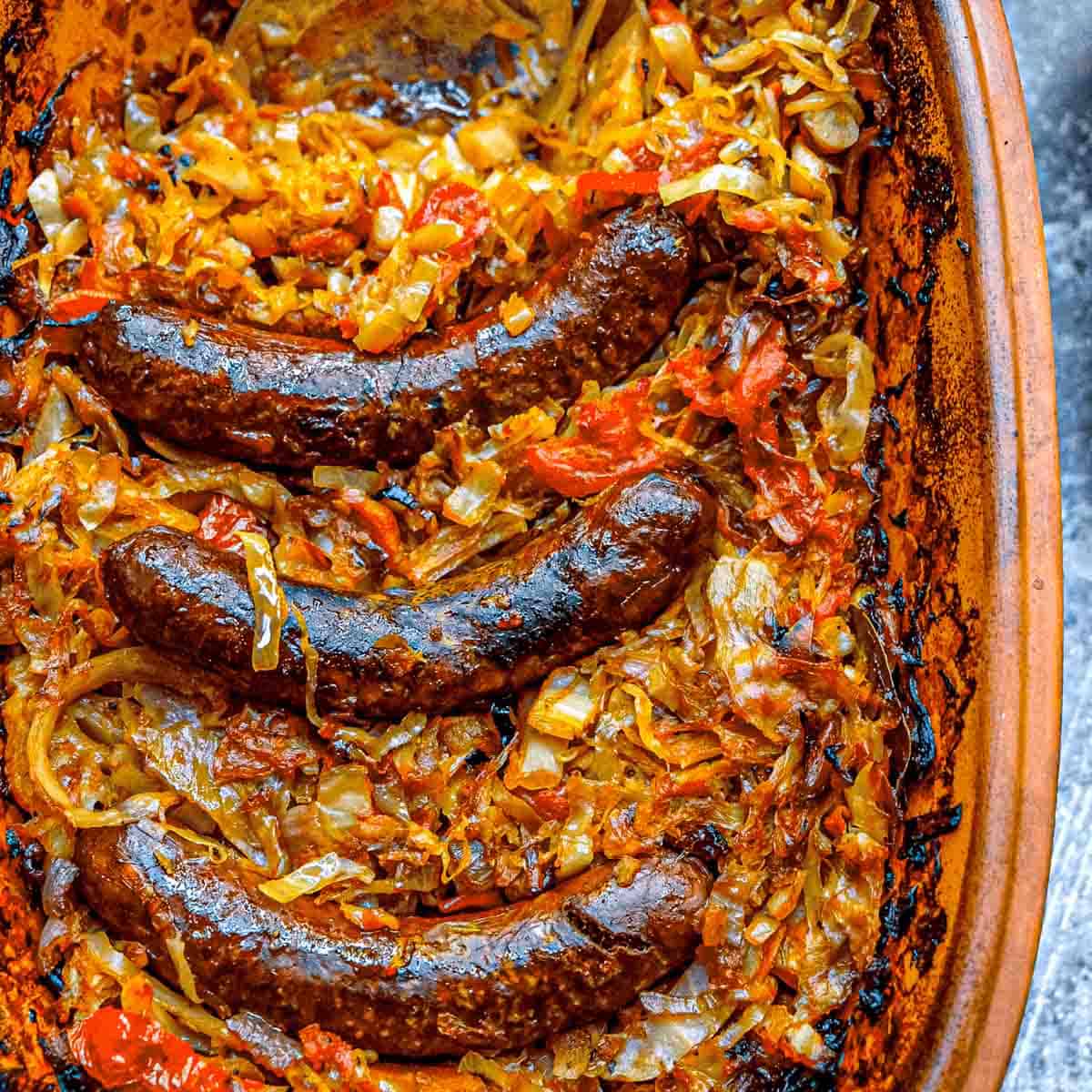
Romanian Slow Roasted Caramelized Cabbage
Ingredients
- ½ head cabbage sliced into thin strips
- 500 grams sauerkraut well drained
- 7 medium sized tomatoes diced
- 1 carrot sliced
- 3 yellow onions finely diced (or substitute other onions)
- 8 cloves garlic sliced
- 1 tablespoon red chilli pepper with seeds sliced thinly
- 1 tablespoon dried summer savory or substitute dried thyme
- ⅓ cup vegetable oil
- 1.5 tablespoons smoked paprika
- 3 bay leaves
- 2 teaspoons salt
- 1 teaspoon black pepper
- 1 handful fresh thyme or substitute dried thyme or more dried summer savoury
Instructions
- Preheat oven to 225 C / 440 F.
- Prepare the vegetablesFinely slice the fresh cabbage and thoroughly the drain fermented cabbage if using both; roughly dice tomatoes, peel and slice the carrot, finely slice the hot pepper, peel and finely dice the onions, and slice the garlic cloves.
- Add the vegetables, salt and oil to a large bowl and massageAdd all the vegetables to a large bowl, sprinkle salt first and then add the oil and massage - crunching the cabbage in your hands to break down the vegetable fibers.
- Add the herbs and spicesPut the fresh thyme leaves in the bottom of your baking dish (or do the same with 1 teaspoon of dried thyme) and add the smoked paprika, summer savoury, black pepper and bay leaves to the vegetables. Mix with your hands or utensils.
- Roast on high 30 minutesAdd everything to your baking dish and roast uncovered for 30 minutes.
- Reduce heat and slow cookReduce heat to 160 C / 320 F, cover with a lid and roast another 2.5 - 3 hours. Check at the halfway mark and stir the mixture well.

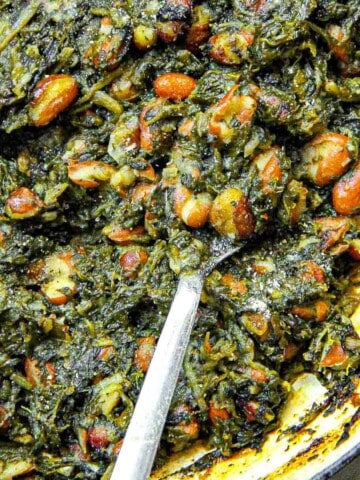
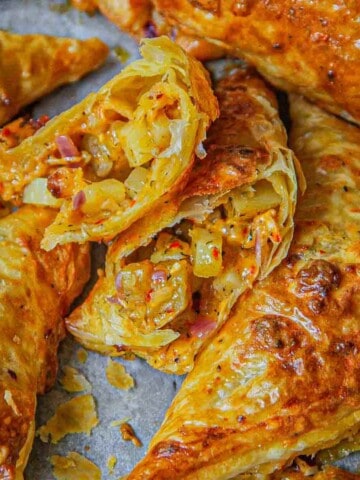
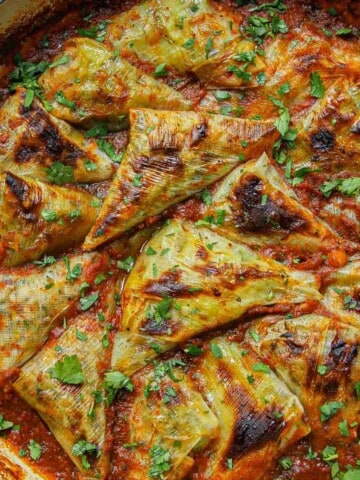
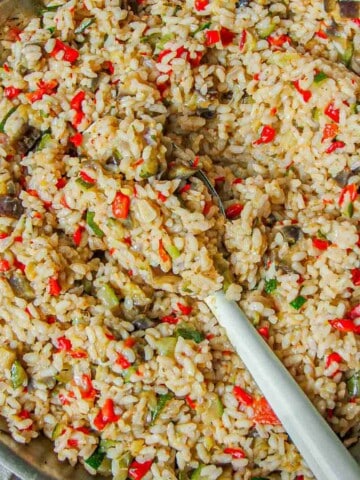
Sara
Delicious!!
Cynthia
A lovely recipe with easy to follow steps! Can’t wait to try the ciorba recipe as well ☺️
Cristina
Thank you so much Cynthia I'm so glad you enjoyed it <3
Daria Doering
Hi Cristina, a couple of questions: the summer savory is listed first as 1 tablespoon, and then as 2 teaspoons. Is this fresh or dried savory? And did you mean to put this ingredient twice? Additionally, the recipe says, "Put the fresh thyme leaves in the bottom of your baking dish," but fresh thyme leaves are not listed in the ingredients. Please clarify. We just spent a month in Romania on a folk dancing tour of Transylvania. Such a beautiful country with delicious food! Thank you for your website!
Cristina
Hi Daria! So lovely to hear about your trip! I was also in Transylvania not long ago and it was so beautiful to visit for a folk dancing tour must have been just amazing!
Sorry for the confusion with the recipe. I've updated now to correct those inconsistencies so you should be able to proceed with the recipe card at the bottom of the post. Re: the onions, yellow is ideal but any onions are okay - that's why I used red. Normally we would use dried summer savoury - the quantities are correct now. And the fresh thyme is additional - or can be substituted for dried thyme (or more summer savoury if you have some).
Please let me know if anything is still unclear and otherwise I hope you enjoy the recipe!
Daria Doering
ps the recipe calls for yellow onions, but the photo shows red onions. ??
Daria Doering
pps Is this dish covered the entire time of roasting, or covered for the first half hour and uncovered after that?
Cristina
It starts uncovered and then it's covered for the rest of the time. I updated the recipe card accordingly.